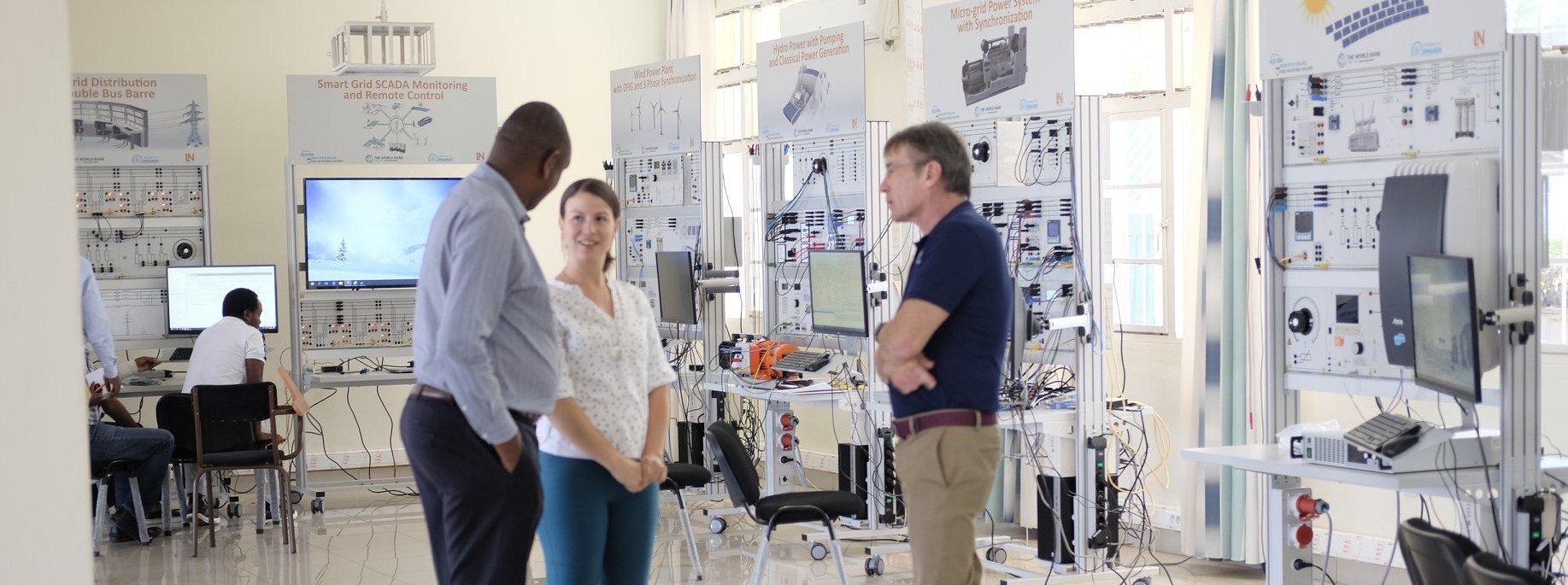Error message
Deprecated function: implode(): Passing glue string after array is deprecated. Swap the parameters in
Drupal\gavias_blockbuilder\shortcodes\gsc_image::sc_image() (line
108 of
themes/gavias_edubiz/gva_elements/gsc_image.php).
Drupal\gavias_blockbuilder\shortcodes\gsc_image::sc_image(Array) (Line: 70)
Drupal\gavias_blockbuilder\shortcodes\gsc_image->render_content(Array) (Line: 85)
include('/var/www/html/modules/gva_blockbuilder/templates/frontend/print-builder.php') (Line: 93)
gavias_blockbuilder_frontend('W3siYXR0ciI6eyJiZ19pbWFnZSI6IiIsImJnX2NvbG9yIjoiIiwiYmdfcG9zaXRpb24iOiJjZW50ZXIgdG9wIiwiYmdfcmVwZWF0Ijoibm8tcmVwZWF0IiwiYmdfYXR0YWNobWVudCI6InNjcm9sbCIsImJnX3NpemUiOiJjb3ZlciIsImJnX3ZpZGVvIjoiIiwic3R5bGVfc3BhY2UiOiJyZW1vdmVfbWFyZ2luIHJlbW92ZV9wYWRkaW5nIHJlbW92ZV9wYWRkaW5nX2NvbCIsInBhZGRpbmdfdG9wIjoiMCIsInBhZGRpbmdfYm90dG9tIjoiMCIsIm1hcmdpbl90b3AiOiIwIiwibWFyZ2luX2JvdHRvbSI6IjAiLCJsYXlvdXQiOiJjb250YWluZXIiLCJlcXVhbF9oZWlnaHQiOiIiLCJpY29uIjoiIiwiY2xhc3MiOiIiLCJyb3dfaWQiOiIifSwiY29sdW1ucyI6eyIxIjp7ImF0dHIiOnsic2l6ZSI6IjEyIiwidHlwZSI6IiIsImJnX2ltYWdlIjoiIiwiYmdfY29sb3IiOiIiLCJiZ19wb3NpdGlvbiI6ImNlbnRlciB0b3AiLCJiZ19yZXBlYXQiOiJuby1yZXBlYXQiLCJiZ19hdHRhY2htZW50Ijoic2Nyb2xsIiwiYmdfc2l6ZSI6ImNvdmVyIiwiY2xhc3MiOiIiLCJjbGFzc19pbm5lciI6IiIsImNvbHVtbl9pZCI6IiIsImhpZGRlbl9sZyI6InNob3ciLCJoaWRkZW5fbWQiOiJzaG93IiwiaGlkZGVuX3NtIjoic2hvdyIsImhpZGRlbl94cyI6InNob3cifSwiaXRlbXMiOlt7InR5cGUiOiJnc2NfaW1hZ2UiLCJzaXplIjoxMiwiZmllbGRzIjp7ImltYWdlIjoiXC9zaXRlc1wvZGVmYXVsdFwvZmlsZXNcLzQyNTIzNjM2XzE4MjI4Njk5NzQ0MzMwNjlfMTE2MTI4MTkxNjE0NjU0ODczNl9vXzAuanBnIiwiYWxpZ24iOiIiLCJtYXJnaW4iOiIiLCJhbHQiOiIiLCJsaW5rIjoiIiwidGFyZ2V0Ijoib2ZmIiwiYW5pbWF0ZSI6IiIsImVsX2NsYXNzIjoiIn19XX0sIjIiOnsiYXR0ciI6eyJzaXplIjoiMTIiLCJ0eXBlIjoiIiwiYmdfaW1hZ2UiOiIiLCJiZ19jb2xvciI6IiNmYWY3ZTYiLCJiZ19wb3NpdGlvbiI6ImNlbnRlciB0b3AiLCJiZ19yZXBlYXQiOiJuby1yZXBlYXQiLCJiZ19hdHRhY2htZW50Ijoic2Nyb2xsIiwiYmdfc2l6ZSI6ImNvdmVyIiwiY2xhc3MiOiIiLCJjbGFzc19pbm5lciI6IiIsImNvbHVtbl9pZCI6IiIsImhpZGRlbl9sZyI6InNob3ciLCJoaWRkZW5fbWQiOiJzaG93IiwiaGlkZGVuX3NtIjoic2hvdyIsImhpZGRlbl94cyI6InNob3cifSwiaXRlbXMiOlt7InR5cGUiOiJnc2NfYm94X3RleHQiLCJzaXplIjoxMiwiZmllbGRzIjp7InRpdGxlIjoiIiwiY29udGVudCI6IjxwPkhpZ2ggRS10ZWNoIFNtYXJ0IGdyaWQgbGFib3JhdG9yeSBvZiB0aGUgQUNFRVNEIGlzIGNvbXBvc2VkIGJ5IGRpZmZlcmVudCBjb3Vyc2VzIGFuZCBpbnN0YWxsZWQgaW4gY29tcHV0ZXIgYW5kIGNhbiBiZSBhY2Nlc3NpYmxlIHZpYSBsYWJzb2Z0LiBJbiBhZGRpdGlvbmFsLCB0aGUgQUNFLUVTRCBoYXMgZGlmZmVyZW50IHNvZnR3YXJlIHBhY2thZ2UgZm9yIG1vZGVsbGluZywgY29udHJvbCwgYXV0b21hdGlvbiwgc3VwZXJ2aXNvcnkgYW5kIGRhdGEgYWNxdWlzaXRpb24gc29mdHdhcmUgcGFja2FnZSBzdWNoIGFzIFNDQURBIFZJRVdFUiBhbmQgU0NBREEgREVTSUdORVIuIEVhY2ggY291cnNlIGhhcyBkaWZmZXJlbnQgY2hhcHRlcnMgYW5kIGV2ZXJ5IGNoYXB0ZXIgaGFzIGRpZmZlcmVudCBleHBlcmltZW50cy48XC9wPiIsImJhY2tncm91bmQiOiIiLCJ0aXRsZV9jb2xvciI6IiIsImxpbmsiOiIiLCJ0YXJnZXQiOiJvZmYiLCJoZWlnaHQiOiIiLCJlbF9jbGFzcyI6IiIsImFuaW1hdGUiOiIifX1dfX19LHsiYXR0ciI6eyJiZ19pbWFnZSI6IiIsImJnX2NvbG9yIjoiIiwiYmdfcG9zaXRpb24iOiJjZW50ZXIgdG9wIiwiYmdfcmVwZWF0Ijoibm8tcmVwZWF0IiwiYmdfYXR0YWNobWVudCI6InNjcm9sbCIsImJnX3NpemUiOiJjb3ZlciIsImJnX3ZpZGVvIjoiIiwic3R5bGVfc3BhY2UiOiJyZW1vdmVfbWFyZ2luIHJlbW92ZV9wYWRkaW5nIHJlbW92ZV9wYWRkaW5nX2NvbCIsInBhZGRpbmdfdG9wIjoiMCIsInBhZGRpbmdfYm90dG9tIjoiMCIsIm1hcmdpbl90b3AiOiIwIiwibWFyZ2luX2JvdHRvbSI6IjAiLCJsYXlvdXQiOiJjb250YWluZXIiLCJlcXVhbF9oZWlnaHQiOiIiLCJpY29uIjoiIiwiY2xhc3MiOiIiLCJyb3dfaWQiOiIifSwiY29sdW1ucyI6eyIxIjp7ImF0dHIiOnsic2l6ZSI6IjEyIiwidHlwZSI6IiIsImJnX2ltYWdlIjoiIiwiYmdfY29sb3IiOiIiLCJiZ19wb3NpdGlvbiI6ImNlbnRlciB0b3AiLCJiZ19yZXBlYXQiOiJuby1yZXBlYXQiLCJiZ19hdHRhY2htZW50Ijoic2Nyb2xsIiwiYmdfc2l6ZSI6ImNvdmVyIiwiY2xhc3MiOiIiLCJjbGFzc19pbm5lciI6IiIsImNvbHVtbl9pZCI6IiIsImhpZGRlbl9sZyI6InNob3ciLCJoaWRkZW5fbWQiOiJzaG93IiwiaGlkZGVuX3NtIjoic2hvdyIsImhpZGRlbl94cyI6InNob3cifSwiaXRlbXMiOlt7InR5cGUiOiJnc2NfZGl2aWRlciIsInNpemUiOjEyLCJmaWVsZHMiOnsiZWxfY2xhc3MiOiIifX0seyJ0eXBlIjoiZ3NjX291cl9wYXJ0bmVycyIsInNpemUiOjEyLCJmaWVsZHMiOnsidGl0bGUiOiJEZXNpZ24gYW5kIE9wZXJhdGlvbiBvZiBTbWFsbCBXaW5kIFR1cmJpbmVzIChPRkYtR1JJRCkiLCJpbWFnZSI6Ilwvc2l0ZXNcL2RlZmF1bHRcL2ZpbGVzXC9obGFiXC8xLnBuZyIsImNvbnRlbnQiOiI8cCBzdHlsZT1cInRleHQtYWxpZ246IGp1c3RpZnk7XCI+U21hbGwgd2luZCB0dXJiaW5lcyByYW5naW5nIHVwIGFwcHJveC4gNSBrVyBvZiBwb3dlciBhcmUgdXNlZCB0b2RheSBhcyBhIHNvdXJjZSBmb3IgZGVjZW50cmFsaXplZCBwb3dlciBzdXBwbHkuPFwvcD5cclxuPHAgc3R5bGU9XCJ0ZXh0LWFsaWduOiBqdXN0aWZ5O1wiPlRoZXkgYXJlIHVzZWQgdG8gcG93ZXIgb2JqZWN0cyB3aGljaCBoYXZlIG5vIGNlbnRyYWwgcG93ZXIgc3VwcGx5IGF2YWlsYWJsZSwgZm9yIGV4YW1wbGUsIG1vYmlsZSByYWRpbyByZWxheSB0cmFuc21pdHRlcnMgb3IgdmFjYXRpb24gaG9tZXMuIFRoZXNlIHBvd2VyIHN5c3RlbXMgZ2VuZXJhdGUgREMgdm9sdGFnZS4gVGhlIGVuZXJneSBjYW4gYmUgc3RvcmVkIGluIGJhdHRlcmllcyB2aWEgY2hhcmdlIHJlZ3VsYXRvcnMuIEludmVydGVycyBhcmUgdXNlZCB0byBnZW5lcmF0ZSBhbHRlcm5hdGluZyB2b2x0YWdlcyBmb3IgdGhlIG9wZXJhdGlvbiBvZiBsb2FkcyBvbiBhIHBvd2VyIGdyaWQ8XC9wPiIsImFkZHJlc3MiOiIiLCJjYXRlZ29yeSI6Ik1vZHVsZSAxIiwibGluayI6IiIsInRhcmdldCI6IjAiLCJlbF9jbGFzcyI6IiIsImFuaW1hdGUiOiIifX0seyJ0eXBlIjoiZ3NjX2RpdmlkZXIiLCJzaXplIjoxMiwiZmllbGRzIjp7ImVsX2NsYXNzIjoiIn19LHsidHlwZSI6ImdzY19vdXJfcGFydG5lcnMiLCJzaXplIjoxMiwiZmllbGRzIjp7InRpdGxlIjoiUmVuZXdhYmxlIGVuZXJneSBzb3VyY2VzIC0gcHJvZmVzc2lvbmFsIHBob3Rvdm9sdGFpY3MiLCJpbWFnZSI6Ilwvc2l0ZXNcL2RlZmF1bHRcL2ZpbGVzXC9obGFiXC8yLmpwZyIsImNvbnRlbnQiOiI8cCBzdHlsZT1cInRleHQtYWxpZ246IGp1c3RpZnk7XCI+TW9kZXJuIHBob3Rvdm9sdGFpYyBzeXN0ZW1zIGluIGdyaWQtY291cGxlZCBvcGVyYXRpb24uIFRoaXMgdHJhaW5pbmcgc3lzdGVtIHBlcm1pdHMgYSByZWFsaXN0aWMgc2ltdWxhdGlvbiBvZiB0aGUgc3VuJ3MgcGF0aC4gVGh1cywgaXQgaXMgYWxzbyBwb3NzaWJsZSB0byBwZXJmb3JtIHRoZSBleHBlcmltZW50cyBpbiB0aGUgbGFib3JhdG9yeSB3aXRob3V0IHJlYWwgc3VubGlnaHQgdXNpbmcgdGhlIGVtdWxhdG9ycy4gVGhlIGRlc2lnbiBvZiBwaG90b3ZvbHRhaWMgc3lzdGVtcyBjb25uZWN0ZWQgdG8gdGhlIGdyaWQgaXMgcmVhbGlzdGljYWxseSBjb252ZXllZC4gSW4gb3JkZXIgdG8gc3RhYmlsaXplIHRoZSBwb3dlciBncmlkLCB0ZWNobmlxdWVzIHN1Y2ggYXMgZGUtcmF0aW5nIHRoZSBpbnZlcnRlciBwb3dlciBhbmQgYSB2YXJpYWJsZSBsb2NhbCBuZXR3b3JrIHBvd2VyIHRyYW5zZm9ybWVyIGFyZSBlbXBsb3llZC4gVHJhbnNmZXIgb2Yga25vd2xlZGdlLCBrbm93LWhvdyBhbmQgUEMgc3VwcG9ydGVkIGV2YWx1YXRpb24gb2YgbWVhc3VyZW1lbnQgZGF0YSBhcmUgbWFkZSBwb3NzaWJsZSBieSB0aGUgbXVsdGltZWRpYSBNb2R1bGUgd2l0aCB0aGUgaGVscCBvZiB0aGUgU0NBREEgUG93ZXJMYWIgc29mdHdhcmU8XC9wPiIsImFkZHJlc3MiOiIiLCJjYXRlZ29yeSI6Ik1vZHVsZSAyIiwibGluayI6IiIsInRhcmdldCI6IjAiLCJlbF9jbGFzcyI6IiIsImFuaW1hdGUiOiIifX0seyJ0eXBlIjoiZ3NjX2RpdmlkZXIiLCJzaXplIjoxMiwiZmllbGRzIjp7ImVsX2NsYXNzIjoiIn19LHsidHlwZSI6ImdzY19vdXJfcGFydG5lcnMiLCJzaXplIjoxMiwiZmllbGRzIjp7InRpdGxlIjoiQmF0dGVyeSBzdG9yYWdlIGZvciBzbWFydGdyaWQgdGVjaG5vbG9neSIsImltYWdlIjoiXC9zaXRlc1wvZGVmYXVsdFwvZmlsZXNcL2hsYWJcLzMuanBnIiwiY29udGVudCI6IjxwPkFuIGVsZWN0cm9jaGVtaWNhbCBlbmVyZ3kgc3RvcmFnZSBkZXZpY2Ugd2l0aCBhIHBob3Rvdm9sdGFpYyBzeXN0ZW0gb3IgYW5vdGhlciBlbmVyZ3kgZ2VuZXJhdGlvbiBzeXN0ZW0gc3VjaCBhcyBhIGNvbWJpbmVkIGhlYXQgYW5kIHBvd2VyIHBsYW50IGlzIGludGVuZGVkIGFzIGEgbWVhbnMgb2Ygc2hpZnRpbmcgb3IgdHJhbnNmZXJyaW5nIHBvd2VyIGdlbmVyYXRpb24gdG8gcGVyaW9kcyBvZiBjb25zdW1wdGlvbiBvciBwZWFrIGNvbnN1bXB0aW9uIHBlcmlvZHMgdG8gcG93ZXIgZ2VuZXJhdGlvbiBwZXJpb2RzLiBGb3IgdGhpcyBwdXJwb3NlLCBleGlzdGVudCBhbmQgYXZhaWxhYmxlIChzb2xhcikgZW5lcmd5IG11c3QgYmUgZ2VuZXJhdGVkIGFuZCBzdWJzZXF1ZW50bHkgc3RvcmVkIHNvIHRoYXQgaXQgY2FuIGJlIHVzZWQgaW4gdGltZXMgb2YgZW5lcmd5IGRlbWFuZC48XC9wPlxyXG48cD5UaGUgYmF0dGVyeSBzdG9yYWdlIGZvciBzbWFydCBncmlkIGNhbiBiZSBjb21iaW5lZCB3aXRoIFBWIHN5c3RlbSBvciB3b3JrIGluZGVwZW5kZW50bHkgb25jZSBpdCBpcyBjb25uZWN0ZWQgdG8gdGhlIHV0aWxpdHkgZ3JpZDxcL3A+IiwiYWRkcmVzcyI6IiIsImNhdGVnb3J5IjoiTW9kdWxlIDMiLCJsaW5rIjoiIiwidGFyZ2V0IjoiMCIsImVsX2NsYXNzIjoiIiwiYW5pbWF0ZSI6IiJ9fSx7InR5cGUiOiJnc2NfZGl2aWRlciIsInNpemUiOjEyLCJmaWVsZHMiOnsiZWxfY2xhc3MiOiIifX0seyJ0eXBlIjoiZ3NjX291cl9wYXJ0bmVycyIsInNpemUiOjEyLCJmaWVsZHMiOnsidGl0bGUiOiJQaG90b3ZvbHRhaWMgc3lzdGVtcyAtIEFkdmFuY2VkIE1vZHVsZSIsImltYWdlIjoiXC9zaXRlc1wvZGVmYXVsdFwvZmlsZXNcL2hsYWJcLzQuanBnIiwiY29udGVudCI6IjxwPlRoaXMgaXMgYSBQViBzeXN0ZW0gd2l0aCBzaW5nbGUgcGhhc2UgYW5kIHRoZSBsZWFybmVycyBjYW4gYW5hbHl6ZSBkaWZmZXJlbnQgZXhwZXJpbWVudHMgc3VjaCBhcyBjb25uZWN0aW9uIGluIHBhcmFsbGVsLCBzZXJpZXMgYW5kIG1peHR1cmUuIEFkZGl0aW9uYWxseSwgdG8gdGhhdCB0aGUgZWZmZWN0IG9mIHNoYWRvdyBjYW4gYmUgYW5hbHl6ZWQuPFwvcD5cclxuPHA+SGVyZSB3ZSB3aWxsIHBsYW4gYSBzdGFuZC1hbG9uZSAob2ZmLWdyaWQpIHBob3Rvdm9sdGFpYyBzeXN0ZW0gZm9yIGEgaG9saWRheSBob21lLiBGaXJzdCBvZiBhbGwsIHdlIG11c3QgZGV0ZXJtaW5lIHRoZSB0b3RhbCBlbmVyZ3kgY29uc3VtcHRpb24gdG8gYmUgYWJsZSB0byBjb3JyZWN0bHkgZGltZW5zaW9uIHRoZSBzb2xhciBnZW5lcmF0b3IuIEluIHRoaXMgcHJvY2VzcywgaXQgaXMgbmVjZXNzYXJ5IHRvIGFjY291bnQgZm9yIGZhY3RvcnMgc3VjaCBhcyBsb2NhdGlvbiBhcyB3ZWxsIGFzIHJvb2YgYWxpZ25tZW50IGFuZCBpbmNsaW5hdGlvbi4gVGhlIHJlcXVpcmVkIGJhdHRlcnkgY2FwYWNpdHkgbmVlZHMgdG8gYmUgYXNjZXJ0YWluZWQgdG9vLjxcL3A+IiwiYWRkcmVzcyI6IiIsImNhdGVnb3J5IjoiTW9kdWxlIDQiLCJsaW5rIjoiIiwidGFyZ2V0IjoiMCIsImVsX2NsYXNzIjoiIiwiYW5pbWF0ZSI6IiJ9fSx7InR5cGUiOiJnc2NfZGl2aWRlciIsInNpemUiOjEyLCJmaWVsZHMiOnsiZWxfY2xhc3MiOiIifX0seyJ0eXBlIjoiZ3NjX291cl9wYXJ0bmVycyIsInNpemUiOjEyLCJmaWVsZHMiOnsidGl0bGUiOiJXaW5kIHBvd2VyIHBsYW50cyB3aXRoIERvdWJseSBGZWQgSW5kdWN0aW9uIEdlbmVyYXRvciAoREZJRykiLCJpbWFnZSI6Ilwvc2l0ZXNcL2RlZmF1bHRcL2ZpbGVzXC9obGFiXC8wNS5qcGciLCJjb250ZW50IjoiPHAgc3R5bGU9XCJ0ZXh0LWFsaWduOiBqdXN0aWZ5O1wiPlRoZSBnZW5lcmFsIHByb3NwZWN0cyBmb3IgdGhlIGdsb2JhbCB3aW5kLWVuZXJneSBtYXJrZXQgYXJlIGJyaWdodDogRHVlIHRvIHRoZWlyIHJhcGlkbHkgZ3Jvd2luZyBlbmVyZ3kgbmVlZHMsIGVtZXJnaW5nIGVjb25vbWllcyBzdWNoIGFzIENoaW5hIGFuZCBJbmRpYSBhbHNvIG5lZWQgdG8gcmVseSBvbiByZW5ld2FibGVzIGlmIHRoZXkgd2FudCB0byBjYXRjaCB1cCB3aXRoIGluZHVzdHJpYWxpemVkIG5hdGlvbnMgaW4gdGltZXMgb2YgcmlzaW5nIHJhdyBtYXRlcmlhbCBzaG9ydGFnZXMuPFwvcD5cclxuPHAgc3R5bGU9XCJ0ZXh0LWFsaWduOiBqdXN0aWZ5O1wiPkF0IHRoZSBlbmQgb2YgRmVicnVhcnkgMjAwNSwgZm9yIGluc3RhbmNlLCBDaGluYSBwYXNzZWQgYSBsYXcgcHJvbW90aW5nIHJlbmV3YWJsZSBlbmVyZ2llcy4gQWNjb3JkaW5nIHRvIHRoZSBEYW5pc2ggbWFuYWdlbWVudCBjb25zdWx0YW5jeSBCVE0sIGFubnVhbCBncm93dGggaW4gdGhlIHdpbmQgcG93ZXIgc2VjdG9yIG1heSByaXNlIHRvIDExNSwwMDAgTVcgYnkgMjAyNS4gQW5kIGEgV2luZCBmb3JjZSAxMiBzdHVkeSBieSBHcmVlbnBlYWNlIGFuZCBHV0VDIGZvcmVjYXN0cyBhIG1hcmtldCB2b2x1bWUgb2YgMTYwLDAwMCBNVyBvZiBuZXdseSBpbnN0YWxsZWQgY2FwYWNpdHkgYnkgMjAyMC5UaGlzIE1vZHVsZSBvbiBERklHIHdpbmQgdHVyYmluZXMgZGVzY3JpYmVzIHRoZSBkZXNpZ24gYW5kIGZ1bmN0aW9uIG9mIG1vZGVybiB3aW5kIHBvd2VyIHBsYW50cy4gVGhlIGNvbnRyb2wgb2YgdmFyaWFibGUtc3BlZWQgd2luZCB0dXJiaW5lcyBpcyBzdHVkaWVkIHVzaW5nIGEgZG91Ymx5LWZlZCBhc3luY2hyb25vdXMgZ2VuZXJhdG9yIGFzIGFuIGV4YW1wbGUuIFdpbmQgY2FuIGJlIGVtdWxhdGVkIHJlYWxpc3RpY2FsbHkgd2l0aCBhIHNlcnZvLW1hY2hpbmUgdGVzdCBzdGFuZCBhbmQgXCJXaW5kIFNpbVwiIHNvZnR3YXJlLjxcL3A+XHJcbjx1bCBzdHlsZT1cImxpc3Qtc3R5bGUtdHlwZTogc3F1YXJlO1wiPlxyXG48bGkgc3R5bGU9XCJ0ZXh0LWFsaWduOiBqdXN0aWZ5O1wiPkxlYXJuaW5nIG9iamVjdGl2ZXM8XC9saT5cclxuPGxpIHN0eWxlPVwidGV4dC1hbGlnbjoganVzdGlmeTtcIj5VbmRlcnN0YW5kaW5nIHRoZSBkZXNpZ24gYW5kIG9wZXJhdGlvbiBvZiB3aW5kIHBvd2VyIHBsYW50czxcL2xpPlxyXG48bGkgc3R5bGU9XCJ0ZXh0LWFsaWduOiBqdXN0aWZ5O1wiPkxlYXJuaW5nIGFib3V0IHRoZSBwaHlzaWNhbCBwcmluY2lwbGVzIHdoZXJlYnkgd2luZCBwb3dlciBpcyB0cmFuc2Zvcm1lZCBpbnRvIHNoYWZ0IHBvd2VyPFwvbGk+XHJcbjxsaSBzdHlsZT1cInRleHQtYWxpZ246IGp1c3RpZnk7XCI+TGVhcm5pbmcgYWJvdXQgdmFyaW91cyB3aW5kIHBvd2VyIHBsYW50IGNvbmNlcHRzIFN0dWR5aW5nIHRoZSBkZXNpZ24gYW5kIG9wZXJhdGlvbiBvZiBhIGRvdWJseS1mZWQgYXN5bmNocm9ub3VzIChpbmR1Y3Rpb24pIGdlbmVyYXRvcjxcL2xpPlxyXG48bGkgc3R5bGU9XCJ0ZXh0LWFsaWduOiBqdXN0aWZ5O1wiPkludmVzdGlnYXRpbmcgZ2VuZXJhdG9yIG9wZXJhdGlvbiBhdCB2YXJpb3VzIHdpbmQgaW50ZW5zaXRpZXMsIGFzIHdlbGwgYXMgY29udHJvbCBvZiBvdXRwdXQgdm9sdGFnZSBhbmQgZnJlcXVlbmN5PFwvbGk+XHJcbjxsaSBzdHlsZT1cInRleHQtYWxpZ246IGp1c3RpZnk7XCI+RGV0ZXJtaW5pbmcgb3B0aW1hbCBvcGVyYXRpbmcgcG9pbnRzIHVuZGVyIHZhcmlvdXMgd2luZCBjb25kaXRpb25zPFwvbGk+XHJcbjxcL3VsPiIsImFkZHJlc3MiOiIiLCJjYXRlZ29yeSI6Ik1vZHVsZSA1IiwibGluayI6IiIsInRhcmdldCI6IjAiLCJlbF9jbGFzcyI6IiIsImFuaW1hdGUiOiIifX0seyJ0eXBlIjoiZ3NjX2RpdmlkZXIiLCJzaXplIjoxMiwiZmllbGRzIjp7ImVsX2NsYXNzIjoiIn19LHsidHlwZSI6ImdzY19vdXJfcGFydG5lcnMiLCJzaXplIjoxMiwiZmllbGRzIjp7InRpdGxlIjoiSGlnaCBWb2x0YWdlIERpcmVjdCBDdXJyZW50IChIVkRDKSAiLCJpbWFnZSI6Ilwvc2l0ZXNcL2RlZmF1bHRcL2ZpbGVzXC9obGFiXC8wNi5qcGciLCJjb250ZW50IjoiPHA+QSBoaWdoLXZvbHRhZ2UgZGlyZWN0LWN1cnJlbnQgKEhWREMpIHRyYW5zbWlzc2lvbiBsaW5rIGVzc2VudGlhbGx5IGNvbnNpc3RzIG9mIGEgY29udmVydGVyIHN0YXRpb24gd2hpY2ggdHJhbnNmb3JtcyB0aGUgY29udmVudGlvbmFsIGVsZWN0cmljaXR5IGdyaWQncyBhbHRlcm5hdGluZyB2b2x0YWdlIGludG8gZGlyZWN0IHZvbHRhZ2UsIGEgdHJhbnNtaXNzaW9uIGxpbmUsIGFuZCBhIGZ1cnRoZXIgY29udmVydGVyIHN0YXRpb24gYXQgdGhlIG90aGVyIGVuZCBmb3IgdHJhbnNmb3JtaW5nIHRoZSBkaXJlY3Qgdm9sdGFnZSBiYWNrIGludG8gYWx0ZXJuYXRpbmcgdm9sdGFnZS4gRW5lcmd5IGNhbiBiZSB0cmFuc21pdHRlZCBpbiBib3RoIGRpcmVjdGlvbnMuPFwvcD5cclxuPHA+SFZEQyBjb252ZXJ0ZXIgc3RhdGlvbiAxIGhhcyB0aGUgdGFzayBvZiB2b2x0YWdlIHJlZ3VsYXRpb24gVHJhaW5pbmcgY29udGVudHM8XC9wPlxyXG48dWw+XHJcbjxsaT5GdW5kYW1lbnRhbHMgb2YgaGlnaC12b2x0YWdlIGRpcmVjdC1jdXJyZW50IChIVkRDKSB0cmFuc21pc3Npb248XC9saT5cclxuPGxpPkRDLWxpbmsgdm9sdGFnZSBjb250cm9sIFx1MjAyMiBSZWFjdGl2ZSBwb3dlciBzdXBwbHkgd2l0aG91dCBhY3RpdmUgcG93ZXIgZmxvdyAoU1RBVENPTSk8XC9saT5cclxuPGxpPk1hbnVhbCBhbmQgYXV0b21hdGljIHN5bmNocm9uaXphdGlvbiB3aXRoIHRoZSBncmlkPFwvbGk+XHJcbjxsaT5BY3RpdmUtcG93ZXIgY29udHJvbCBvZiBIVkRDIHdpdGggcG93ZXItZmxvdyBjaGFuZ2U8XC9saT5cclxuPGxpPkluZGl2aWR1YWwgcmVhY3RpdmUtcG93ZXIgY29udHJvbCBmb3IgYm90aCBjb252ZXJ0ZXIgc3RhdGlvbnM8XC9saT5cclxuPGxpPkxvc3MgYW5hbHlzaXMgb2YgSFZEQyBvdmVyIGRpZmZlcmVudCBkaXN0YW5jZXM8XC9saT5cclxuPGxpPkhWREMgc3VwcGx5IGZvciBhIGdyaWQgY29udGFpbmluZyBwYXNzaXZlIGNvbnN1bWVyczxcL2xpPlxyXG48XC91bD4iLCJhZGRyZXNzIjoiIiwiY2F0ZWdvcnkiOiJNb2R1bGUgNiIsImxpbmsiOiIiLCJ0YXJnZXQiOiIwIiwiZWxfY2xhc3MiOiIiLCJhbmltYXRlIjoiIn19LHsidHlwZSI6ImdzY19kaXZpZGVyIiwic2l6ZSI6MTIsImZpZWxkcyI6eyJlbF9jbGFzcyI6IiJ9fSx7InR5cGUiOiJnc2Nfb3VyX3BhcnRuZXJzIiwic2l6ZSI6MTIsImZpZWxkcyI6eyJ0aXRsZSI6Ik1pY3JvZ3JpZHMiLCJpbWFnZSI6Ilwvc2l0ZXNcL2RlZmF1bHRcL2ZpbGVzXC9obGFiXC83XzAuanBnIiwiY29udGVudCI6IjxwPkEgcG93ZXIgZ3JpZCB3aXRoIHBvd2VyIHNvdXJjZXMsIHBvd2VyIGxvd2VyaW5nIGxvYWRzIChkcmFpbnMpIGFuZCBwb3RlbnRpYWwgc3RvcmFnZSB1bml0cyB3aGljaCBjYW4gYWx0ZXJuYXRlIGJldHdlZW4gJ2lzbGFuZCBvcGVyYXRpb24nXC8naXNsYW5kIHBhcmFsbGVsIHRvIGdyaWQnIGFuZCAnZ3JpZCBwYXJhbGxlbCBvcGVyYXRpb24nIGlzIGNhbGxlZCBhIG1pY3JvZ3JpZC48XC9wPlxyXG48cD5UaGlzIG1vZGVybiBmb3JtIG9mIGFuIGVsZWN0cmljaXR5IGdyaWQgc3lzdGVtIHBlcm1pdHMgb3BlcmF0aW9uIG9uIGNvbnZlbnRpb25hbCB1dGlsaXR5IGdyaWRzIGFzIHdlbGwgYXMgc2VsZi1zdWZmaWNpZW50IG9wZXJhdGlvbiB3aXRoIGxvY2FsIHBvd2VyIHN1cHBseS4gQWx0ZXJuYXRpbmcgYmV0d2VlbiBib3RoIG9wZXJhdGluZyBtb2RlcyBpcyBmb3IgdGhlIG1vc3QgcGFydCBwb3NzaWJsZSB3aXRob3V0IGludGVycnVwdGlvbi4gVHJhaW5pbmcgY29udGVudDxcL3A+XHJcbjx1bD5cclxuPGxpPkZ1bmRhbWVudGFscyBvZiBpc2xhbmQgZ3JpZHMgKG1pY3JvZ3JpZHMpPFwvbGk+XHJcbjxsaT5BdXRvbWF0aWMgdm9sdGFnZSBjb250cm9sIG9mIGEgZ2VuZXJhdG9yIGluIGFuIGlzbGFuZCBncmlkPFwvbGk+XHJcbjxsaT5BdXRvbWF0aWMgcmVhY3RpdmUgcG93ZXIgKFZBcikgY29udHJvbCBvZiBzZXZlcmFsIGdlbmVyYXRvcnMgaW4gcGFyYWxsZWwgb3BlcmF0aW9uPFwvbGk+XHJcbjxsaT5BdXRvbWF0aWMgYWN0aXZlIHBvd2VyIGNvbnRyb2wgb2Ygc2V2ZXJhbCBnZW5lcmF0b3JzIGluIHBhcmFsbGVsIG9wZXJhdGlvbjxcL2xpPlxyXG48bGk+Q29vcmRpbmF0aW9uIG9mIGVuZXJneSByZXF1aXJlbWVudHMgYW5kIGdlbmVyYXRpb24gaW4gYSBzdGFuZC1hbG9uZSwgaXNsYW5kIGdyaWQ8XC9saT5cclxuPGxpPlVzZSBvZiBtb2Rlcm4gSVQgdGVjaG5vbG9neSBsaWtlLCBmb3IgZXhhbXBsZSwgbmV0d29ya2VkIHNlbnNvcnMgYW5kIGFjdHVhdG9ycywgUExDIGNvbnRyb2wgYW5kIFNDQURBIG9wZXJhdGluZyBpbnRlcmZhY2U8XC9saT5cclxuPGxpPidTbWFydCBNZXRlcmluZycgb2YgYSBiYWxhbmNlZCBub2RlIGluIG9yZGVyIHRvIG1ha2UgYSBzdWJuZXR3b3JrIG9yIG1pY3JvZ3JpZCBhdXRvbm9tb3VzPFwvbGk+XHJcbjxcL3VsPiIsImFkZHJlc3MiOiIiLCJjYXRlZ29yeSI6Ik1vZHVsZSA3IiwibGluayI6IiIsInRhcmdldCI6IjAiLCJlbF9jbGFzcyI6IiIsImFuaW1hdGUiOiIifX0seyJ0eXBlIjoiZ3NjX2RpdmlkZXIiLCJzaXplIjoxMiwiZmllbGRzIjp7ImVsX2NsYXNzIjoiIn19LHsidHlwZSI6ImdzY19vdXJfcGFydG5lcnMiLCJzaXplIjoxMiwiZmllbGRzIjp7InRpdGxlIjoiSHlkcm9wb3dlciB3aXRoIHB1bXBpbmcgYW5kIGNsYXNzaWNhbCBwb3dlciBnZW5lcmF0aW9uIiwiaW1hZ2UiOiJcL3NpdGVzXC9kZWZhdWx0XC9maWxlc1wvaGxhYlwvOC5qcGciLCJjb250ZW50IjoiPHA+QnkgdGhlIHllYXIgMjA1MCwgdGhlIHNoYXJlIG9mIHJlbmV3YWJsZSBlbmVyZ3kgaW4gR2VybWFueSBpcyB0byBpbmNyZWFzZSB0byBhIHByZXNlbnRseSB1bmltYWdpbmFibGUgODAlLjxcL3A+XHJcbjxwPkFzIHBhcnQgb2YgdGhpcyBleHBhbnNpb24sIHRoZSBwb3dlciBncmlkIHdpbGwgZnJlcXVlbnRseSBiZSBvdmVyLXN1cHBsaWVkIGR1cmluZyB0aW1lcyBvZiBzdHJvbmcgZ2VuZXJhdGlvbiBieSB3aW5kIGFuZCBzb2xhciBwb3dlciBwbGFudHMuIFRvZGF5J3MgcHVtcGVkLXN0b3JhZ2UgcG93ZXIgc3RhdGlvbnMgY2FuIGFic29yYiBleGNlc3MgY2FwYWNpdHkgaW4gdGhlIGdpZ2F3YXR0IHJhbmdlIGZvciBzZXZlcmFsIGhvdXJzIGFuZCByZXR1cm4gdGhpcyBjYXBhY2l0eSB0byB0aGUgcG93ZXIgZ3JpZCB3aGVuIG5lZWRlZC4gUHVtcGVkLXN0b3JhZ2UgcG93ZXIgc3RhdGlvbnMgYXJlIGNvbm5lY3RlZCB0byBpbnRlcm5hdGlvbmFsIGhpZ2ggYW5kIGV4dHJhLWhpZ2ggdm9sdGFnZSBuZXR3b3JrcyBhbmQgcHJvdmlkZSBlbmVyZ3kgc3RvcmFnZSBjYXBhYmlsaXR5IHdoaWNoIHdpbGwgYmUgYW4gaW1wb3J0YW50IGNvbXBvbmVudCBpbiB0aGUgZGV2ZWxvcG1lbnQgb2Ygc21hcnQgZ3JpZHMuIFRyYWluaW5nIGNvbnRlbnQ8XC9wPlxyXG48dWw+XHJcbjxsaT5IaXN0b3JpY2FsIGRldmVsb3BtZW50IG9mIHB1bXBlZC1zdG9yYWdlIHBvd2VyIHN0YXRpb25zLjxcL2xpPlxyXG48bGk+UHJlc2VudCBhbmQgZnV0dXJlIHNpZ25pZmljYW5jZSBvZiBwdW1wZWQtc3RvcmFnZSBwb3dlciBzdGF0aW9ucy48XC9saT5cclxuPGxpPk1hbnVhbCBhbmQgYXV0b21hdGljIHBvd2VyIHJlZ3VsYXRpb24gd2l0aCBzeW5jaHJvbm91cyBtYWNoaW5lcy48XC9saT5cclxuPGxpPkF1dG9tYXRpYyByZWFjdGl2ZSBwb3dlciBjb21wZW5zYXRpb24gd2l0aCBzeW5jaHJvbm91cyBtYWNoaW5lcy48XC9saT5cclxuPGxpPlVzZSBvZiBtb2Rlcm4gaW5mb3JtYXRpb24gdGVjaG5vbG9neSBzdWNoIGFzIG5ldHdvcmtlZCBzZW5zb3JzXC9hY3R1YXRvcnMsIFBMQyBjb250cm9sIGFuZCBTQ0FEQSB1c2VyIGludGVyZmFjZS48XC9saT5cclxuPGxpPlwiU21hcnQgbWV0ZXJpbmdcIiBvZiBhIGJhbGFuY2luZyBub2RlIGZvciBxdWFzaS1hdXRvbm9tb3VzIG9wZXJhdGlvbiBvZiBhIHN1Ym5ldHdvcmsuPFwvbGk+XHJcbjxsaT5JbXByb3ZlZCBjb29yZGluYXRpb24gYmV0d2VlbiBlbmVyZ3kgZGVtYW5kIGFuZCBnZW5lcmF0aW9uLjxcL2xpPlxyXG48XC91bD4iLCJhZGRyZXNzIjoiIiwiY2F0ZWdvcnkiOiJNb2R1bGUgOCIsImxpbmsiOiIiLCJ0YXJnZXQiOiIwIiwiZWxfY2xhc3MiOiIiLCJhbmltYXRlIjoiIn19LHsidHlwZSI6ImdzY19kaXZpZGVyIiwic2l6ZSI6MTIsImZpZWxkcyI6eyJlbF9jbGFzcyI6IiJ9fSx7InR5cGUiOiJnc2Nfb3VyX3BhcnRuZXJzIiwic2l6ZSI6MTIsImZpZWxkcyI6eyJ0aXRsZSI6IlBvd2VyIGVsZWN0cm9uaWNzIiwiaW1hZ2UiOiJcL3NpdGVzXC9kZWZhdWx0XC9maWxlc1wvaGxhYlwvOS5qcGciLCJjb250ZW50IjoiPHA+QSBtb2Rlcm4gZnJlcXVlbmN5IGNvbnZlcnRlciBpcyBkZXNpZ25lZCB0byB0cmFuc2Zvcm0gYW55IHN0YW5kYXJkIHRocmVlLXBoYXNlIG1vdG9yIGludG8gYSBzcGVlZC12YXJpYWJsZSBkcml2ZS48XC9wPlxyXG48cD5UaGUgcm9idXN0bmVzcyBhbmQgcG9wdWxhcml0eSBvZiB0aGUgc3RhbmRhcmQgdGhyZWUtcGhhc2UgbW90b3IgaGFzIHBsYXllZCBhIGJpZyByb2xlIGluIG1ha2luZyBlbGVjdHJvbmljIGRyaXZlIHRlY2hub2xvZ3kgdXNpbmcgZnJlcXVlbmN5IGNvbnZlcnRlcnMgc3VjaCBhIGh1Z2Ugc3VjY2Vzcy4gVG9kYXkgeW91IGNhbiBmaW5kIGZyZXF1ZW5jeSBjb252ZXJ0ZXJzIGluIGEgaG9zdCBvZiBhcHBsaWNhdGlvbnMsIGZvciBleGFtcGxlLCB0ZXh0aWxlIG1hY2hpbmVyeSwgcGFja2FnaW5nIG1hY2hpbmVzLCBsaWZ0aW5nIGVxdWlwbWVudCBhbmQgZXZlbiB3YXNoaW5nIG1hY2hpbmVzLiBUaGVzZSBjb25zdGl0dXRlIG9ubHkgYSBmZXcgZXhhbXBsZXMgZm9yIHRoZSB3aWRlc3ByZWFkIHVzZSBhbmQgc3VjY2Vzc2Z1bCBkZXBsb3ltZW50IG9mIGZyZXF1ZW5jeSBjb252ZXJ0ZXJzLiBUaHJvdWdoIHRoaXMgbW9kdWxlIHlvdSBjYW4gZGVzaWduIGEgbW9kZWwgaW4gTUFUTEFCIGFuZCB2YWxpZGF0ZWQgdmlhIFNDQURBIFZpZXdlciBzb2Z0d2FyZSBwYWNrYWdlIGFuZCBwcm9ncmFtbWluZy48XC9wPiIsImFkZHJlc3MiOiIiLCJjYXRlZ29yeSI6Ik1vZHVsZSA5IiwibGluayI6IiIsInRhcmdldCI6IjAiLCJlbF9jbGFzcyI6IiIsImFuaW1hdGUiOiIifX0seyJ0eXBlIjoiZ3NjX2RpdmlkZXIiLCJzaXplIjoxMiwiZmllbGRzIjp7ImVsX2NsYXNzIjoiIn19LHsidHlwZSI6ImdzY19vdXJfcGFydG5lcnMiLCJzaXplIjoxMiwiZmllbGRzIjp7InRpdGxlIjoiU21hcnQgZ3JpZCBhbmQgRW5lcmd5IE1hbmFnZW1lbnQgIiwiaW1hZ2UiOiJcL3NpdGVzXC9kZWZhdWx0XC9maWxlc1wvaGxhYlwvMTExMC5qcGciLCJjb250ZW50IjoiPHA+VGhpcyBNb2R1bGUgaW1wYXJ0cyBhIGdlbmVyYWwgcHJhY3RpY2FsIGtub3dsZWRnZSBvZiBzbWFydCBncmlkcy4gTmV3IHRlY2hub2xvZ2llcyB3aWxsIHBlcm1pdCBwb3dlciBncmlkcyB0byBiZSBiZXR0ZXIgcHJlcGFyZWQgZm9yIGZ1dHVyZSByZXF1aXJlbWVudHMuPFwvcD5cclxuPHA+TW9yZSBmbGV4aWJsZSBuZXR3b3JrIG1hbmFnZW1lbnQgaXMgdG8gbWFrZSByaXNpbmcgcHJvcG9ydGlvbnMgb2YgcmVuZXdhYmxlIGVuZXJneSBzdXBwbHkgY29tcGF0aWJsZSB3aXRoIGNvbnZlbnRpb25hbCBwb3dlciBwbGFudCBpbmZyYXN0cnVjdHVyZS4gVGhlIG51bWJlcnMgYW5kIGRpdmVyc2l0eSBvZiBzdWNoIGRlY2VudHJhbGl6ZWQgcG93ZXIgcGxhbnRzIHJlcXVpcmVzIGEgbmV3IHR5cGUgb2YgbWFuYWdlbWVudCBpbiB0aGUgb3BlcmF0aW9uIG9mIHBvd2VyIGdyaWRzIC0gYW4gaW50ZWxsaWdlbnQgbmV0d29yayBvciBcInNtYXJ0IGdyaWRcIi48XC9wPlxyXG48cD5UcmFpbmluZyBjb250ZW50PFwvcD5cclxuPHVsPlxyXG48bGk+SW1wcm92ZWQgY29vcmRpbmF0aW9uIGJldHdlZW4gcG93ZXIgZGVtYW5kIGFuZCBnZW5lcmF0aW9uPFwvbGk+XHJcbjxsaT5Vc2Ugb2YgbW9kZXJuIGluZm9ybWF0aW9uIHRlY2hub2xvZ3kgc3VjaCBhcyBJbnRlcm5ldCwgc2Vuc29ycywgY29udHJvbGxlcnMgYW5kIHdpcmVsZXNzIHRyYW5zbWlzc2lvbiBlcXVpcG1lbnQ8XC9saT5cclxuPGxpPlNtYXJ0IG1ldGVyaW5nIC0gZGlnaXRhbCBlbGVjdHJpY2l0eSBtZXRlcnMgbWVhc3VyZSBwb3dlciBjb25zdW1wdGlvbiBhdCBwb3dlciBncmlkJ3MgZW5kIHBvaW50czxcL2xpPlxyXG48bGk+U2hpZnRzIGluIGhvdXNlaG9sZCBjb25zdW1wdGlvbiBhd2F5IGZyb20gcGVhayBsb2FkIHBlcmlvZHM8XC9saT5cclxuPGxpPlJ1bm5pbmcgb2YgZmxleGlibGUgYXBwbGljYXRpb25zIHN1Y2ggYXMgYWlyIGNvbmRpdGlvbmluZyBkaXJlY3RseSBieSBwb3dlciBzdXBwbHkgY29tcGFuaWVzIG91dHNpZGUgcGVhayBsb2FkIHBlcmlvZHMuPFwvbGk+XHJcbjxcL3VsPlxyXG48cD5BbGwgZGlzdHJpYnV0ZWQgZW5lcmd5IHJlc291cmNlcyBzdWNoIGFzIFBWLCBIeWRyb3Bvd2VyLCB3aW5kIHdpdGggREZJRywgYmF0dGVyeSBzdG9yYWdlcyBjYW4gYmUgY29ubmVjdGVkLCBtb25pdG9yZWQsIHN3aXRjaCBvbiBhbmQgb2ZmIHJlbW90ZWx5IGFuZCB0aGVpciBvdXRwdXRzIGNhbiBiZSBtYW5hZ2VkIHZpYSBTdXBlcnZpc29yeSBDb250cm9sIGFuZCBEYXRhIEFjcXVpc2l0aW9uIFZpZXdlciBzb2Z0d2FyZSBwYWNrYWdlIChTQ0FEQSBWaWV3ZXIpLjxcL3A+IiwiYWRkcmVzcyI6IiIsImNhdGVnb3J5IjoiTW9kdWxlIDEwIiwibGluayI6IiIsInRhcmdldCI6IjAiLCJlbF9jbGFzcyI6IiIsImFuaW1hdGUiOiIifX1dfX19XQ==') (Line: 47)
Drupal\gavias_blockbuilder\Plugin\Field\FieldFormatter\BlockBuilderFormatter->viewElements(Object, 'en') (Line: 89)
Drupal\Core\Field\FormatterBase->view(Object, 'en') (Line: 263)
Drupal\Core\Entity\Entity\EntityViewDisplay->buildMultiple(Array) (Line: 351)
Drupal\Core\Entity\EntityViewBuilder->buildComponents(Array, Array, Array, 'full') (Line: 24)
Drupal\node\NodeViewBuilder->buildComponents(Array, Array, Array, 'full') (Line: 293)
Drupal\Core\Entity\EntityViewBuilder->buildMultiple(Array) (Line: 250)
Drupal\Core\Entity\EntityViewBuilder->build(Array)
call_user_func_array(Array, Array) (Line: 100)
Drupal\Core\Render\Renderer->doTrustedCallback(Array, Array, 'Render #pre_render callbacks must be methods of a class that implements \Drupal\Core\Security\TrustedCallbackInterface or be an anonymous function. The callback was %s. Support for this callback implementation is deprecated in 8.8.0 and will be removed in Drupal 9.0.0. See https://www.drupal.org/node/2966725', 'silenced_deprecation', 'Drupal\Core\Render\Element\RenderCallbackInterface') (Line: 781)
Drupal\Core\Render\Renderer->doCallback('#pre_render', Array, Array) (Line: 372)
Drupal\Core\Render\Renderer->doRender(Array, ) (Line: 200)
Drupal\Core\Render\Renderer->render(Array, ) (Line: 226)
Drupal\Core\Render\MainContent\HtmlRenderer->Drupal\Core\Render\MainContent\{closure}() (Line: 573)
Drupal\Core\Render\Renderer->executeInRenderContext(Object, Object) (Line: 227)
Drupal\Core\Render\MainContent\HtmlRenderer->prepare(Array, Object, Object) (Line: 117)
Drupal\Core\Render\MainContent\HtmlRenderer->renderResponse(Array, Object, Object) (Line: 90)
Drupal\Core\EventSubscriber\MainContentViewSubscriber->onViewRenderArray(Object, 'kernel.view', Object)
call_user_func(Array, Object, 'kernel.view', Object) (Line: 111)
Drupal\Component\EventDispatcher\ContainerAwareEventDispatcher->dispatch('kernel.view', Object) (Line: 156)
Symfony\Component\HttpKernel\HttpKernel->handleRaw(Object, 1) (Line: 68)
Symfony\Component\HttpKernel\HttpKernel->handle(Object, 1, 1) (Line: 57)
Drupal\Core\StackMiddleware\Session->handle(Object, 1, 1) (Line: 47)
Drupal\Core\StackMiddleware\KernelPreHandle->handle(Object, 1, 1) (Line: 191)
Drupal\page_cache\StackMiddleware\PageCache->fetch(Object, 1, 1) (Line: 128)
Drupal\page_cache\StackMiddleware\PageCache->lookup(Object, 1, 1) (Line: 82)
Drupal\page_cache\StackMiddleware\PageCache->handle(Object, 1, 1) (Line: 47)
Drupal\Core\StackMiddleware\ReverseProxyMiddleware->handle(Object, 1, 1) (Line: 52)
Drupal\Core\StackMiddleware\NegotiationMiddleware->handle(Object, 1, 1) (Line: 23)
Stack\StackedHttpKernel->handle(Object, 1, 1) (Line: 708)
Drupal\Core\DrupalKernel->handle(Object) (Line: 19)











